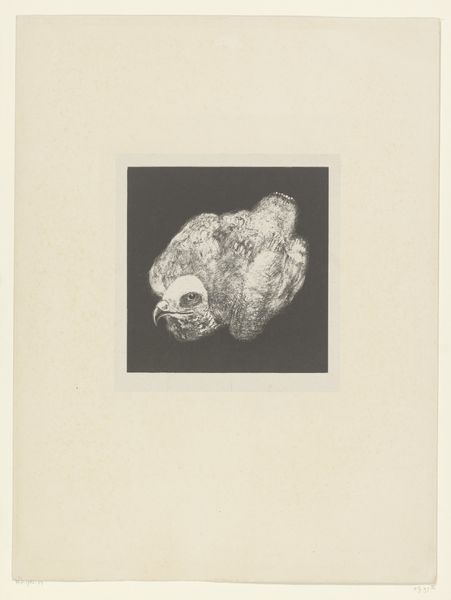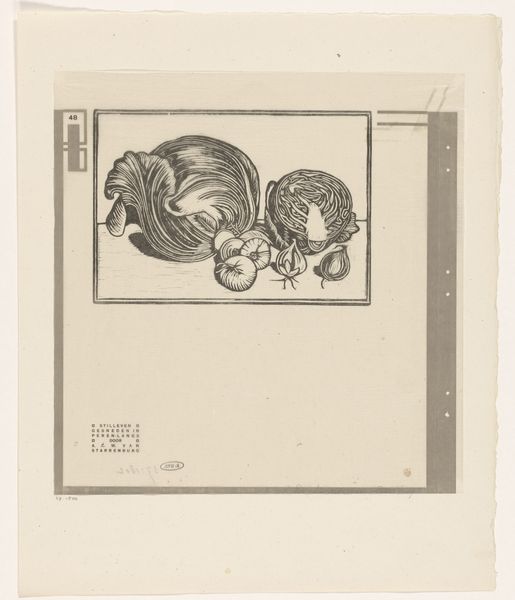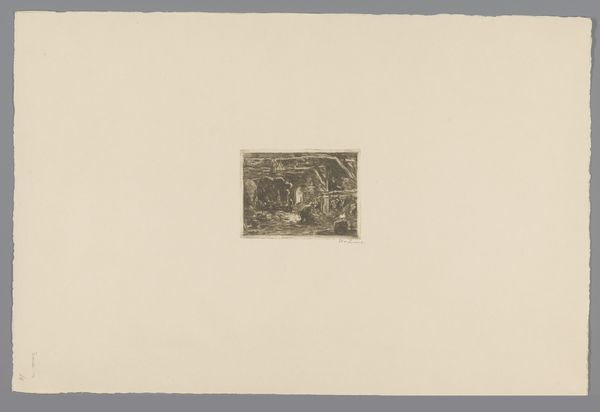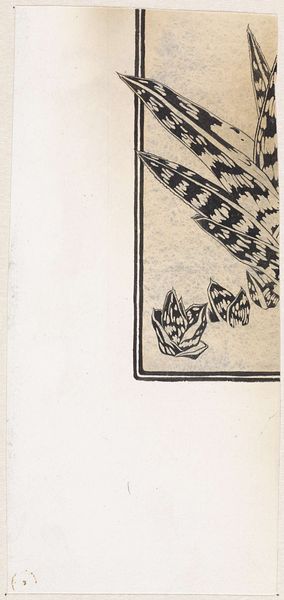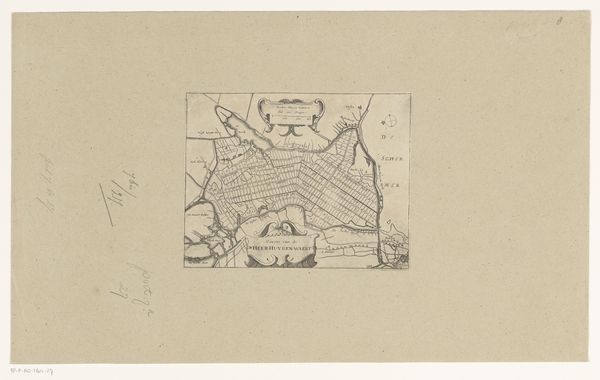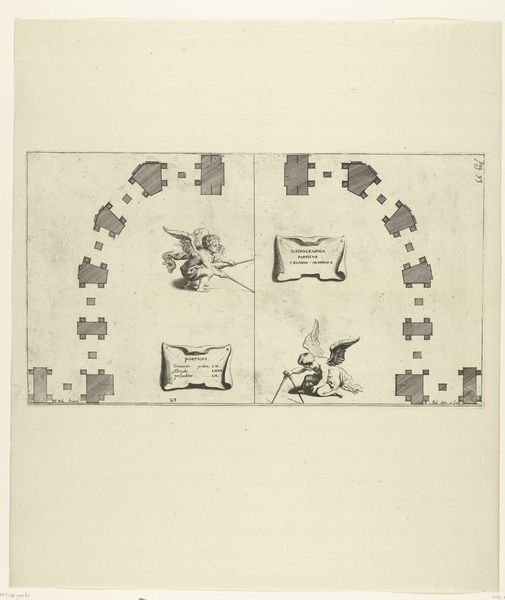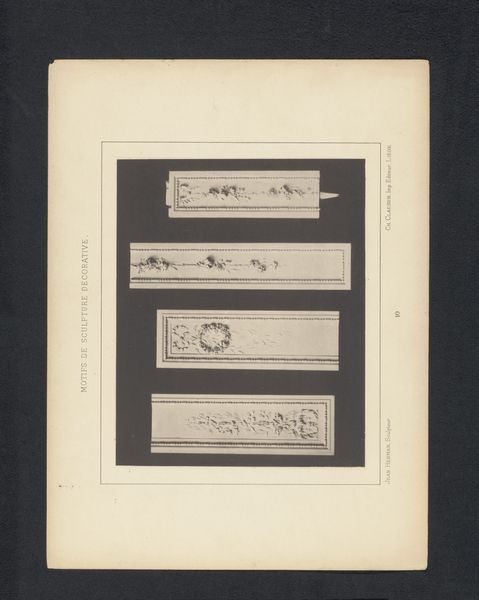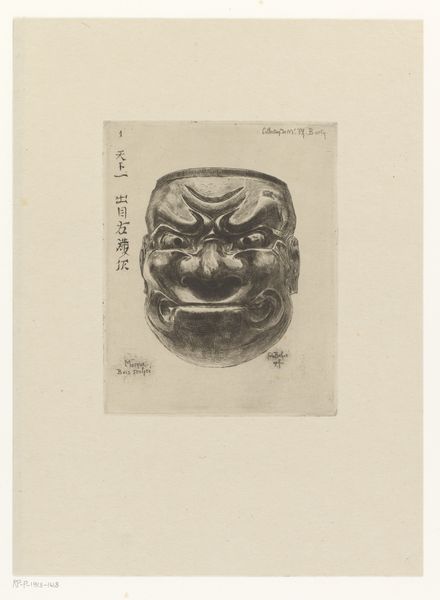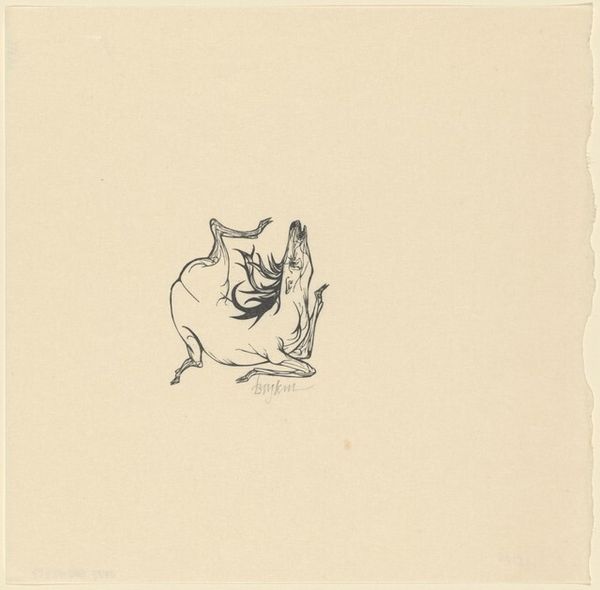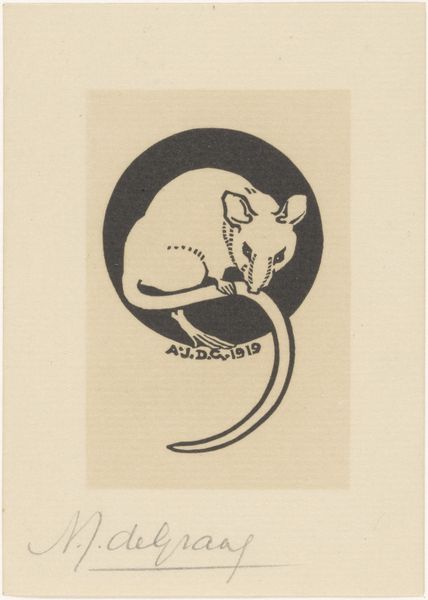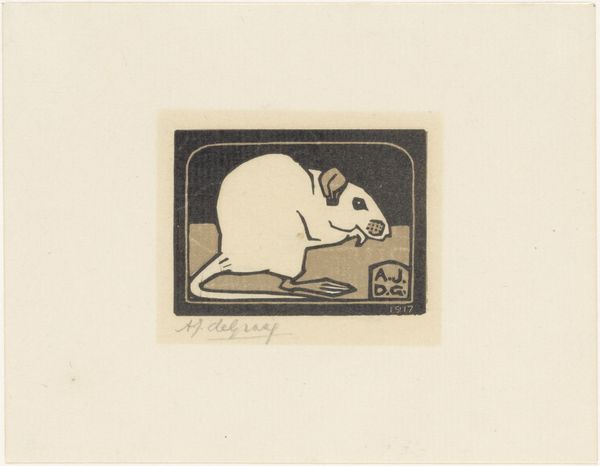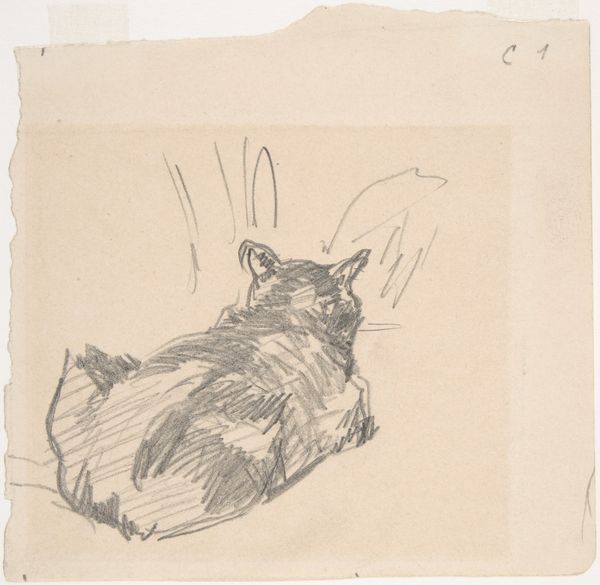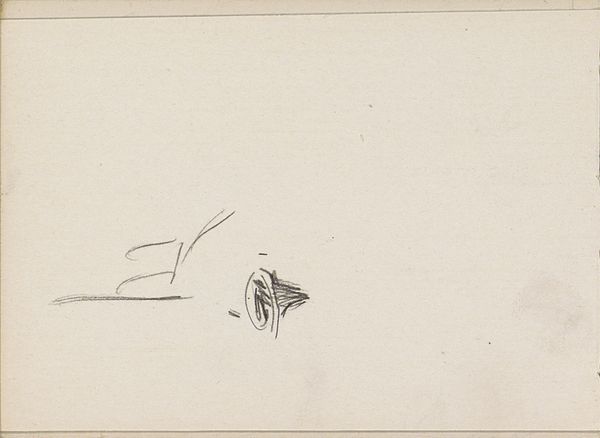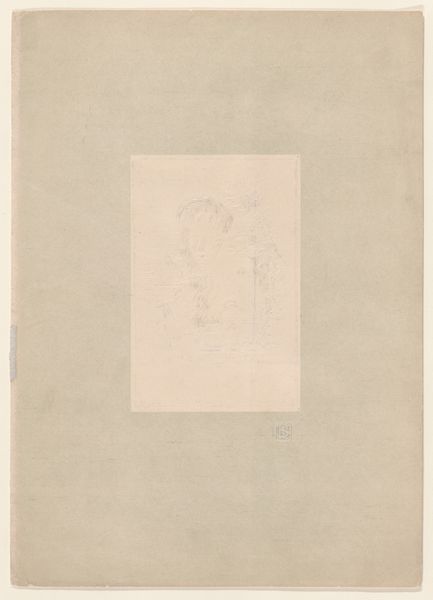
print, woodcut
#
art-nouveau
# print
#
bird
#
fantasy-art
#
geometric
#
woodcut
#
line
#
symbolism
Dimensions: height 320 mm, width 312 mm
Copyright: Rijks Museum: Open Domain
Curator: Carel Adolph Lion Cachet created this arresting vignette, “Vignet met zevenkoppige vogel of draak,” in 1919. It's held here at the Rijksmuseum, a striking example of the artist's work in printmaking. Editor: Immediately, I’m struck by the sheer density of the composition. The sharp lines, the stark contrast... it creates a mood that’s both fantastical and a bit ominous, wouldn’t you say? Curator: Ominous is a good word. The composition’s symmetry is noteworthy. The repetition in the multiple heads of the bird-dragon is visually compelling, reinforcing the tension that emerges. The use of white space surrounding the design is also vital. Editor: The woodcut medium really lends itself to that starkness. Given the rise of expressionism and anxieties surrounding the First World War, can we see its reflection here? Curator: Indeed, this piece seems deeply entwined with the symbolic language that came to dominate artistic and literary circles post-war. A seven-headed beast speaks to an age preoccupied with dread and apocalypse. Editor: There's an undeniable art nouveau influence at play, particularly within the geometric border designs. The overall feel suggests a blend of styles coming to a boiling point! Curator: Precisely! Cachet isn't simply presenting a fantastical creature, he is exploring line, shape and texture—a conversation that reveals layers of symbolism, perhaps revealing anxiety, that can only occur on the picture plane. Editor: It feels as though it reflects how public thought responded to societal shifts. Curator: In summation, Cachet masterfully manipulates the symbolic language of his era, producing not only a striking image but one imbued with considerable historical weight. Editor: A perfect encapsulation of anxieties translated into a truly memorable work!
Comments
No comments
Be the first to comment and join the conversation on the ultimate creative platform.
